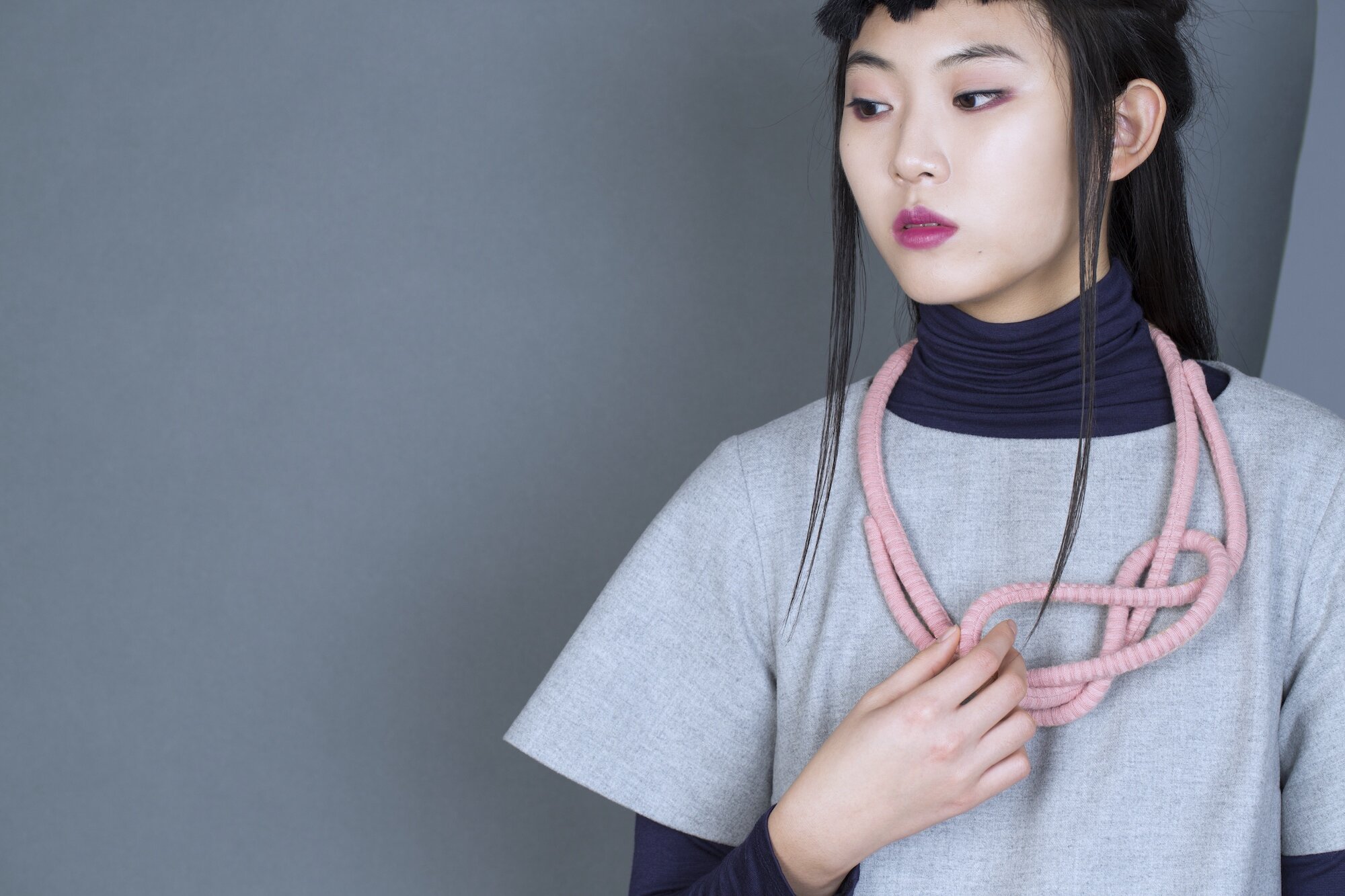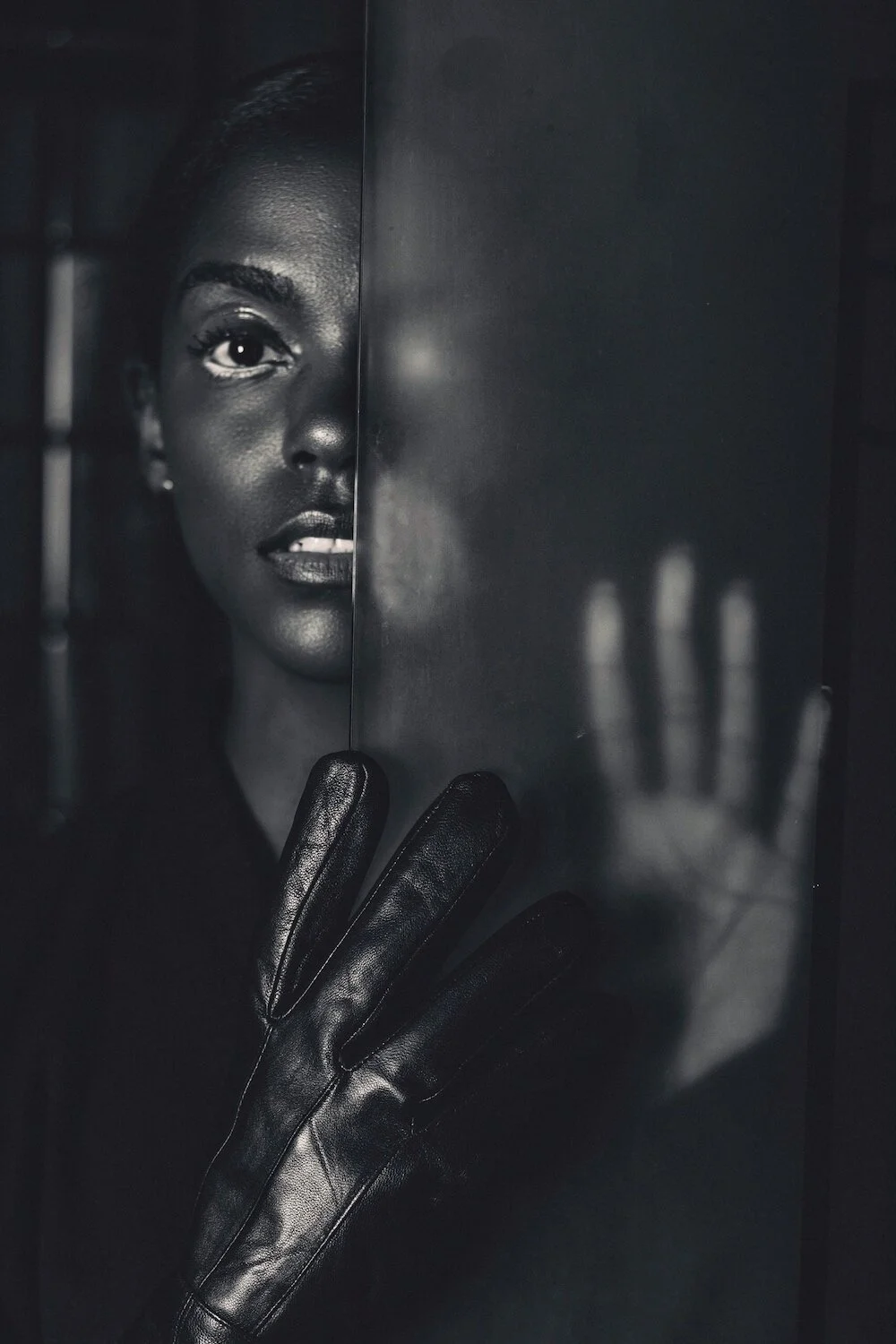Camelia Skikos
Camelia Skikos is a fashion label based in San Francisco, founded by the designer who gives the brand its name. After completing a degree in Fashion Design at the University of Art in Romania, Camelia Skikos moved to London where she further defined her fashion studies while working as a Fashion Illustrator and Designer for various British brands.
Camelia Skikos
Interview by T.S Legend
Photography: Claudia Goetzelmann
Model: Nadine
Styling: Teresa Tran
Hair and Makeup: Diane Catorc
In 2003 Camelia relocated to San Francisco where she accepted a position as a head designer at Levi Strauss. While designing and consulting for different companies she was teaching Fashion Design at the Academy of Art University.
In 2010 Camelia Skikos launched her eponymous label and the following year she won the San Francisco Fashion Award for Best Women`s Wear Designer. She continues to collaborate with prestigious brands while developing her brand as a creative playground to explore new aesthetic boundaries. Camelia Skikos design philosophy stems from a continuing fascination with the way garments can make an impact on our lives, based on the unconscious relations between the human being and the garments we wear.
Using techniques involving geometric shapes, her designs come to dialogue with the human body resulting in a multidimensional effect of innovation, dynamism and a sophisticated sense of femininity with an edge. All garments are designed and made in California, to ensure the highest environmental standards. They are produced in limited quantities and combine value with quality. We chat with the formidable designer whose designs take our breath away to discuss her design aesthetics, inspiration, challenges and growing up in Russia and how that has impacted and influenced her work
What was it like growing up in Romania and how has that influenced your work? I grew up in Romania while it was caged by communism and brutal dictatorship. Most people were not allowed to travel outside the communist countries or have any access to information about what was happening around the world. As a designer you must be informed, explore, observe the world and experiment, reach conclusions and then break them. That was almost impossible during those times of restrictions and limitations.
Once the Iron Curtain was off, everything started from zero. Because there was almost no fashion industry at the time, there were no rules so everything started from scratch, creativity flowing limitlessly. It was very powerful. That happened at a very critical moment in my life when I was just starting to try and figure out a direction in my life and career. The sudden freedom of being able to pursue a career in Fashion Design and the idea that I could finally choose my own path in life was astounding.
What real life situation would you say has had the greatest impact and influence on your design aesthetics and why? I think growing up in such a limited environment made me even more curious about what is out there and eager to explore. Because there was no freedom of speech and everything you said could be interpreted as being against the regime, people had a strong desire to express themselves through different forms of art, it helped them get rid of a lot of anger and feel less limited.
Art and fashion was definitely a form of rebellion for me during those times. When I was a teenager I was even kicked out of school one day because I dared to modify my communist uniform. I wasn`t allowed to come back to school until I bought a new uniform that looked exactly like everyone else’s. So of course, in my free time I would go crazy on designing clothes that were as different as possible. I didn`t think of it as fashion, it was just an instinctual need to express myself and evade.
What drew you to fashion design? My beginnings in this field were instinctual. While I was studying art, Fashion seemed to me to be the perfect medium to express myself and to evade the uniformity of those days.
I always loved discovering the hidden beauty in everything around me and transforming that into fashion.
After designing full time for big brands like Gap and Levi Strauss, what inspired you to start your own label? While I enjoyed designing for other companies I was always in a constant need for more creative freedom and flexibility. Creating from a place of freedom rather than normative restrictions based on the ideals of other companies seemed more appealing to me. I really think that freedom is essential in order to create, and if I can’t create I don’t feel alive
What were some of the challenges you faced when you started your label and how did you deal with those challenges? When you start your own business every choice you make, from the most insignificant to the most important, will follow you through every step of the process… The realization of that, and the fact that things might not come out perfect or the way you expect them to be, can be petrifying. I dealt with that by trying to be less of a perfectionist and learning to let go.
I am absolutely in love with your SS17 collection ‘Alter Ego’; can you please talk me through your inspiration for it? My Spring 2017 collection investigates the possible ways of rendering the concept of identity and belonging of displaced people around the world. It is about people who have to leave the place they considered home, with its unique culture and beliefs; it is about becoming a migrant, a hybrid - one more displaced being of the world. When you leave your country you lose everything that is familiar to you including a big part of your identity. You have to reinvent yourself to adapt to a new culture and contexts so you gain a new identity, an Alter Ego.
And how about your AW17 collection? For Fall Winter 2017/18 I found inspiration in the geometric and biomorphic sculptures of Anish Kapoor. His recordings of shape, color and contradictions translate to my collection through the sharp, strong silhouettes and juxtapositions of contrasting fabric textures creating visual and tactile accumulations of contrasts.
How would you describe your collections? My collections always express a little bit of tension between something that is more constricted and controlled and something less inhibited and free.
Opposites create drama. Good and bad inevitably coexist in our lives. Fashion can give a great amount of freedom to people and no matter what times we live in, it can allow us to be who we want to be.
How do you stay inspired and creative? What are your influences and passions that keep you inspired? Adding variety to what I do is what keeps me interested and motivated. Illustration and photography are some of my passions. Traveling to other countries also helps me stay inspired and creative. I also work on different projects that can add a different dimension to my work and can keep me curious.
You have done your fair share of amazing projects over the years, which project will you say was the most memorable, challenging and unusual? Some of the projects on wearable technology with Google were definitely the most interesting. Developing garment prototypes using interactive textiles was definitely an interesting challenge. Working in the tech field is definitely challenging as a fashion designer and I am learning new things every day.
Has that project had any influence on any of your collections? Not yet, I try to keep my collections separate and different from all the other projects and collaborations.
How would you describe your design philosophy? My design philosophy stems from a continuing fascination with the way garments can make an impact on our lives, based on the unconscious relations between the human being and the garments we wear.
What advice would you give to anyone thinking about a career in design? Emphasize the things that make you different. If the qualities that make you different are genuine and interesting enough, the world will just take notice… and even then, success is not a given but at least you had fun while you did it.
Don`t take fashion too seriously. That can make you feel limited and loose that urge to explore and express your ideas without limitations. Create, design, and play… It`s great when a job turns into an adventure, when you get to build and create something that you really like.






















